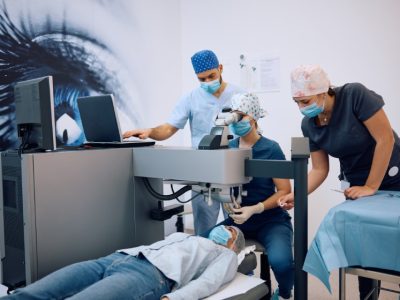If you’ve been recommended therapeutic Botox for a medical condition—whether it’s chronic migraines, muscle spasticity, or overactive bladder—you might be wondering what to expect. Is it like cosmetic Botox? Does it hurt? Do you need to do anything beforehand? Don’t worry. Let’s walk through everything you need to know before your first appointment so you feel prepared, informed, and confident.
What Is Therapeutic Botox?
Therapeutic Botox is a medical-grade version of botulinum toxin used to treat a variety of chronic health conditions. Unlike cosmetic Botox, which focuses on reducing wrinkles, therapeutic Botox targets nerves and muscles to relieve symptoms such as pain, muscle stiffness, or urinary urgency.
Some common FDA-approved uses include:
- Chronic migraines
- Overactive bladder
- Cervical dystonia
- Spasticity in limbs
- Excessive sweating (hyperhidrosis)
- Temporomandibular joint disorders (TMJ)
Why Preparation Matters
Just like any medical treatment, proper preparation can make your therapeutic Botox session smoother and more effective. Think of it like prepping for a dental procedure or even a workout—if you go in ready, you’ll recover faster and feel more in control.
So, what exactly should you do before the big day? Let’s discuss.
1. Understand Why You’re Getting It
Before anything else, make sure you’re clear on the medical reason behind the Botox treatment. Have you talked to your doctor about all your symptoms? Are you aware of alternative options? Knowing why you’re receiving this treatment and what you expect from it sets realistic expectations—and helps you track results later.
Ask yourself:
- What symptoms do I want to reduce?
- How will success be measured?
- How long will it take to feel results?
2. Review Your Medications
Some medications can increase the risk of bruising or interfere with how Botox works. A week before your appointment, talk to your provider about everything you’re taking—this includes over-the-counter medications, herbal supplements, and even vitamins.
Avoid blood thinners like:
- Aspirin
- Ibuprofen (Advil, Motrin)
- Fish oil
- Vitamin E
Unless your doctor instructs otherwise, consider pausing these 3–7 days ahead of time.
3. Avoid Alcohol and Smoking
Alcohol can increase bruising, and smoking can reduce how well your body heals. Try to avoid alcohol for at least 24–48 hours before your appointment. If you smoke, cutting back in the days before and after treatment may help with faster recovery.
4. Eat Something Light
Arriving on an empty stomach is not a great idea—especially if you’re feeling nervous. Eat a light, balanced meal about 1–2 hours before your appointment. This can help stabilize your blood sugar and keep you calm during the session.
Avoid caffeine if you’re sensitive to it, as it might increase jitters or nervousness.
5. Dress Comfortably
Depending on where your Botox will be injected (e.g., neck, forehead, bladder area), wear loose and comfortable clothing that gives your provider easy access. You might also want to avoid wearing makeup, especially if injections will be near your face or head.
6. Ask Questions
This is your body—don’t hesitate to ask questions. Whether you’re unsure about side effects, injection technique, or how soon results appear, your provider should be happy to walk you through everything.
Here are a few you might consider asking:
- How many units are being used and why?
- What side effects should I expect?
- When will I see results, and how long will they last?
- Can I drive or return to work right after?
7. Know What Happens During the Appointment
Let’s remove the mystery. A typical therapeutic Botox session lasts about 15–30 minutes, depending on the treatment area. Your provider may mark the injection sites and use a tiny needle to deliver Botox into specific muscles or nerves. The injections themselves feel like small pinches—most patients tolerate them well.
There’s usually no need for anesthesia, but ice or a numbing cream can be used if you’re sensitive.
8. Post-Treatment Do’s and Don’ts
While preparation is essential, what you do after the appointment also matters.
Here are some common post-care tips:
- Don’t lie down for 4 hours after treatment (especially for migraine Botox)
- Avoid touching or rubbing the area
- Skip strenuous workouts for at least 24 hours
- Watch for side effects, such as soreness or slight bruising, which usually fade within a few days
9. Track Your Progress
Botox for therapeutic purposes doesn’t always offer instant results. It may take anywhere from a few days to two weeks to feel relief. Keep a journal to track symptoms—note changes in pain levels, muscle tension, or bladder control. This information will help your doctor determine if adjustments are needed in future sessions.
10. Plan Your Follow-Ups
Therapeutic Botox isn’t a one-time fix. It usually requires follow-up treatments every 3–6 months to maintain results. Make sure you understand the long-term plan—how often you’ll need appointments and whether adjustments are expected over time.
Is There Anything to Be Nervous About?
Feeling a little anxious before your first appointment is normal. But remember, therapeutic Botox has been used safely for decades. It’s FDA-approved for many conditions and backed by strong clinical research.
If you’ve chosen a trained, experienced provider and followed the prep steps above, you’re in great shape for a successful experience.
Final Thoughts
Preparing for your first therapeutic Botox appointment isn’t complicated—but being informed and ready can make a world of difference in how smooth and effective the process feels. Talk openly with your provider, follow pre-appointment advice, and monitor your body’s response. With the right approach, therapeutic Botox can bring real relief and long-term results.
Still wondering what to expect or nervous about the needle? Let’s discuss! Your questions matter, and understanding the process is key to a confident and positive treatment experience.







Comments